Using separated manure solids for compost bedding
Learn about using compost bedding made from separated manure solids. This technical information is for Ontario dairy farmers.
ISSN 1198-712X, Published June 2015
Introduction
Improving cow comfort is a continuing goal for the dairy producer. Using lots of bedding is one way to improve cow comfort. With this in mind, many producers are considering separated manure solids for bedding (Figure 1). The undigested pieces of feed fibres can be separated from dairy manure and used for bedding. The material is sometimes referred to as dried manure solids (DMS) or undigested feed fibres (UFF), but more commonly, the term used is compost bedding (CB).
Why the interest in compost bedding? Sand is still the number one cow comfort bedding product, but many producers are unwilling to deal with the headaches associated with handling sand-laden manure. Sand is heavy, abrasive and causes increased wear and tear on manure-handling equipment. As an alternative to sand, producers are considering compost bedding because it is a readily available, renewable source, obtainable in large quantities, that can be used liberally in free stalls.
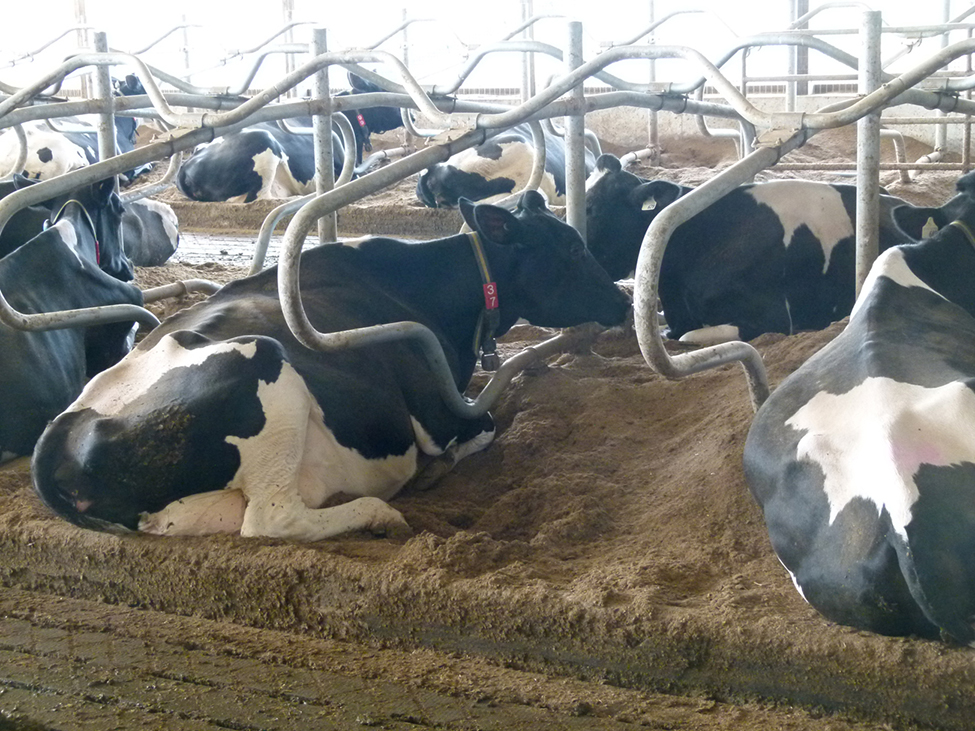
How compost bedding is produced
Compost bedding is produced by one of three methods:
- separated solids from anaerobic digesters
- separated solids from drum composters
- separated solids without processing
Separated solids from anaerobic digesters
Anaerobic digestion is a process by which manure and other organic material are broken down by bacteria in an environment free of oxygen, at a temperature at which the bacteria thrive. The bacteria produce a gas mostly composed of methane and carbon dioxide, referred to as biogas.
The remaining slurry is called digestate (Figure 2).
The biogas is mostly used to power engines connected to generators to produce electricity as an income source. Digesting the manure has the advantage of killing the pathogens and reducing the odour while preserving the fertilizer value of the manure.
The digestate can then be separated to produce compost bedding. Anaerobic digestion takes place at a temperature of 35°C for 20 days or more, which effectively kills almost all of the pathogens.
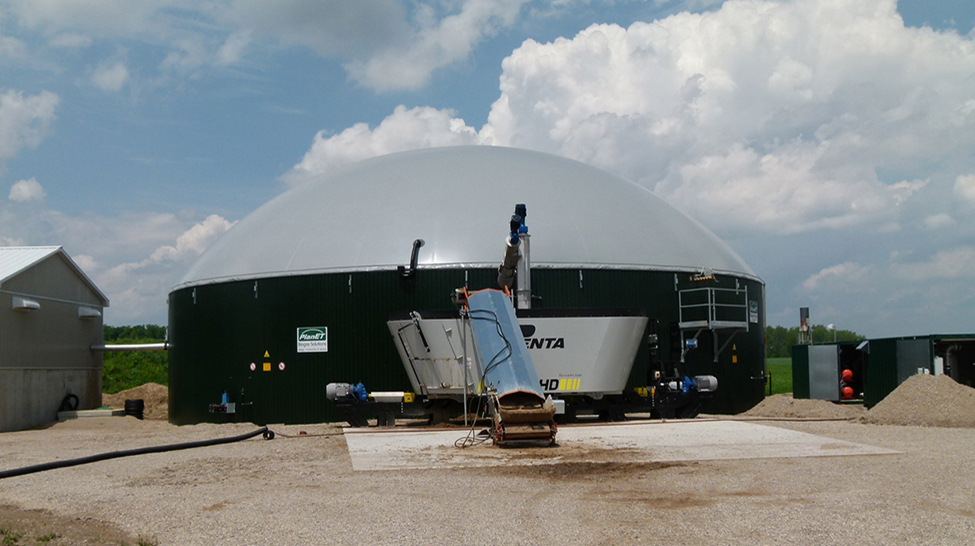
Composted bedding from drum composters
Composting is a natural biological process by which bacteria break down plant or animal material aerobically, in an oxygen-filled environment. A drum composter (Figure 3) accelerates the composting process by drawing oxygen through the material while constantly turning and mixing it. Solids from liquid manure are separated before they are transferred into the rotating drum. Composting the manure solids takes place at about 70°C for 2-3 days. The higher temperatures for a short period of time effectively kill most of the pathogens.
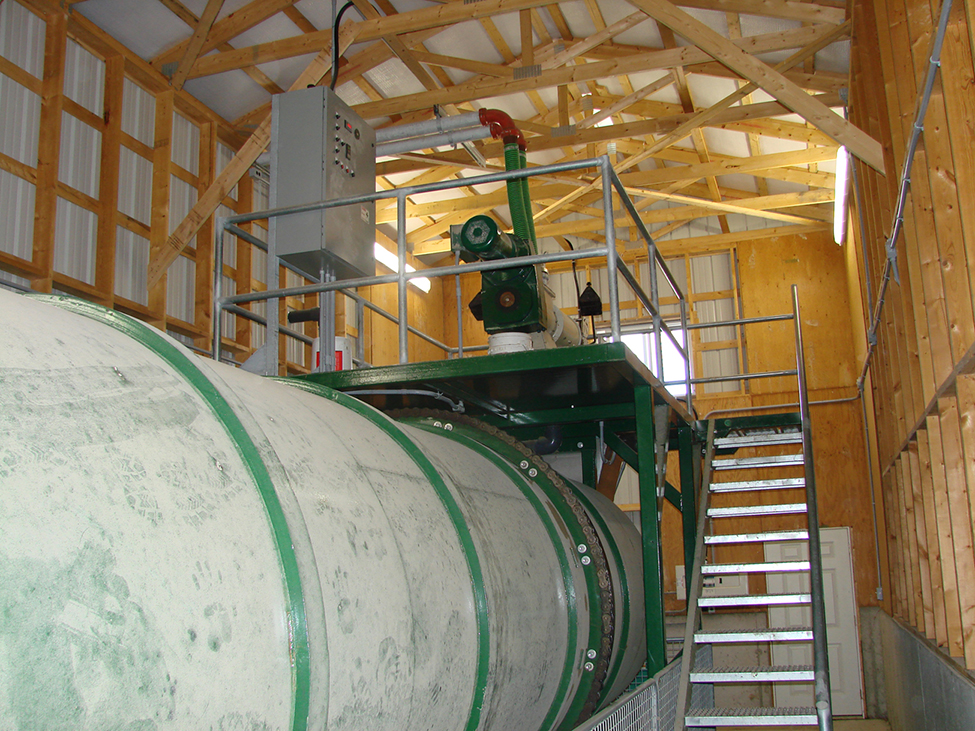
Separated solids without processing
Solids separated from the liquid manure and used fresh is sometimes referred to as "green compost" (Figure 4). Using green compost is similar to using green sawdust for bedding. It is a more volatile product because the pathogens have not been reduced by anaerobic digestion or accelerated composting.
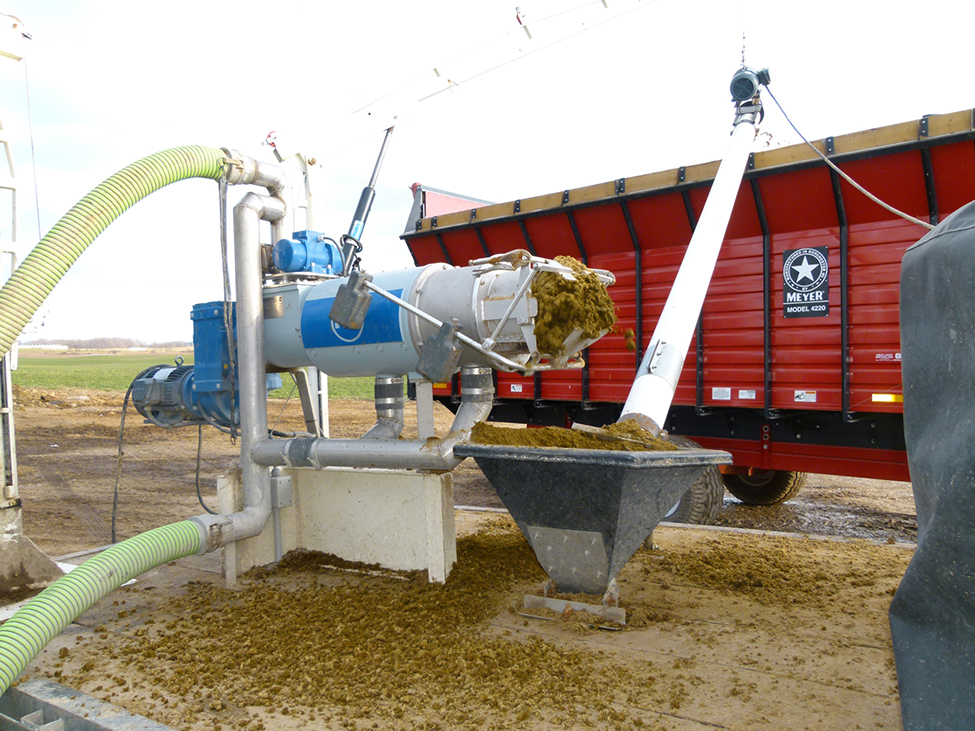
How to use compost bedding
No matter which method has been used to produce the compost bedding, the material (especially the green compost) has not completely finished the composting process. Therefore, the material will reheat if stored for any length of time in a pile. Compost bedding must be used fresh and managed to avoid reheating and growing more bacteria. Compost bedding is used by producers in one of three ways:
- used to retain a deeper layer in a bedding keeper
- applied as a layer on top of mattresses or mats
- used in a deep bedded stall
Using a bedding keeper to increase comfort
Since most producers have an abundance of compost bedding, some have added "bedding keepers" (Figure 5) to their stalls to increase the amount of compost bedding that can be used to improve the comfort in the stalls. This is most commonly done by fastening a pressure-treated board, 15.2 cm x 15.2 cm (6 in. x 6 in.) cut diagonally in half, to the back of the stall. This allows a 7.6-10.2 cm (3-4 in.) bed of compost to be maintained in the stall.
Green compost must be used with a bedding keeper. Form a pack by applying the compost bedding in layers and allowing the cows to pack it down. When a pack is formed, add the green compost and remove it as necessary from the top of the pack.
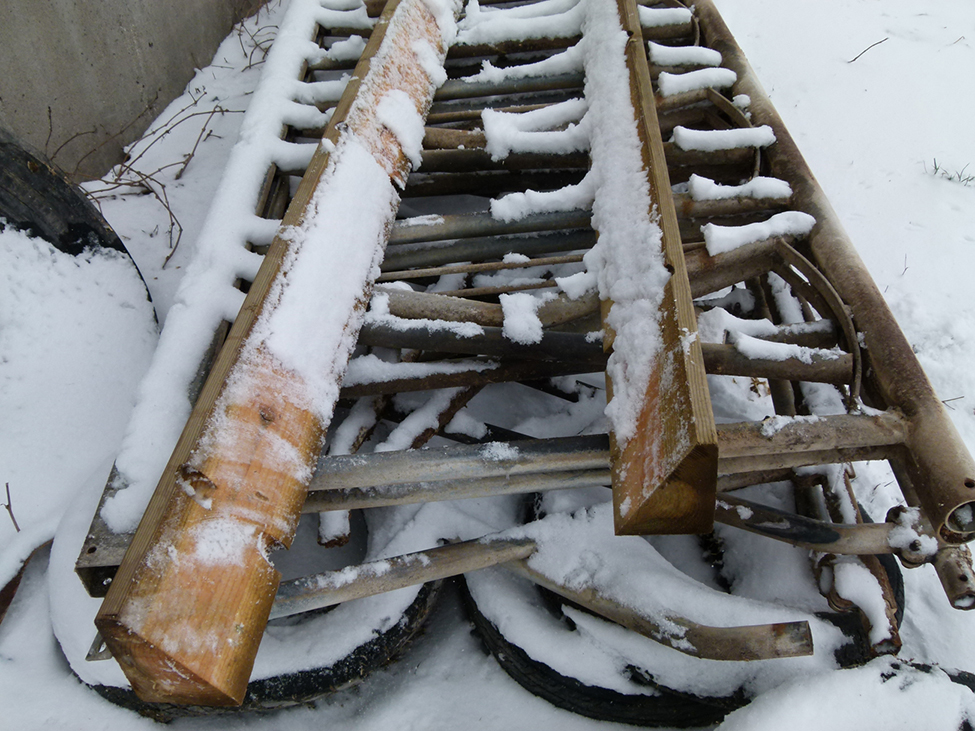
Applied as a layer on mattresses or mats
The most common method of using compost bedding is to apply a layer directly on mattresses or mats, similar to any other type of organic bedding, only more frequently, to avoid reheating in the stalls.
Deep-bedded compost
The most benefit can be obtained by using compost bedding in a deep-bedded stall (Figure 6), which are designed the same as sand stalls, with a 20.3-cm (8-in.) high rear concrete curb formed at an angle to reduce the amount of concrete exposed to the cow. Most producers using deep-bedded stalls bed frequently and cultivate the stalls to level and fluff the bedding. Cows will dig in the deep-bedded stalls to form hills and valleys and if they are not levelled, producers find that the cows will not use the stalls as well and that the material will pack down.
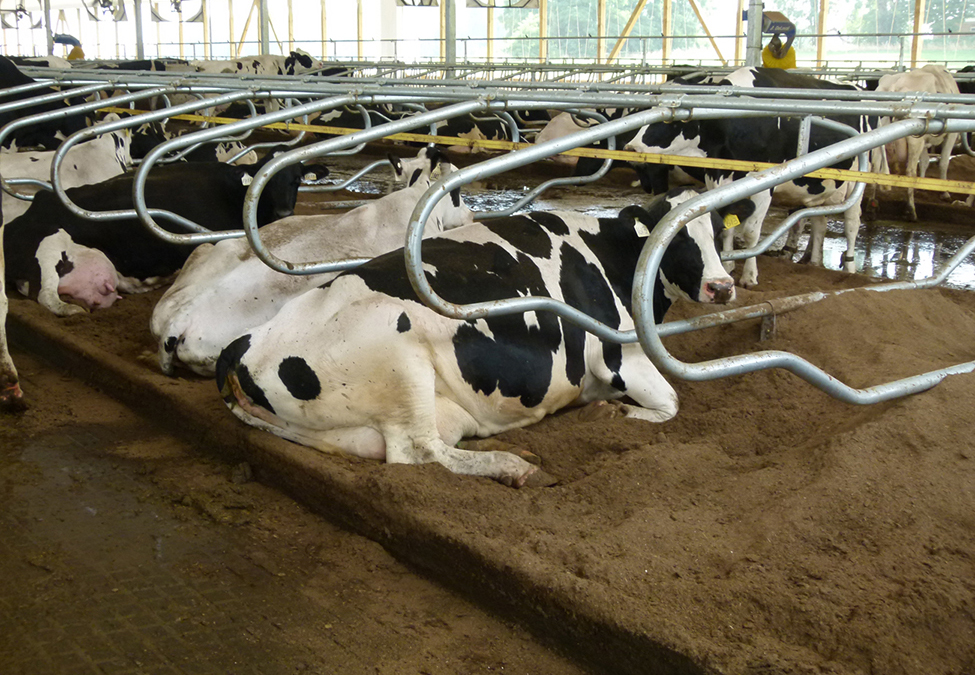
Managing compost bedding
Compost bedding has a typical moisture content of 65%-68%. Most separation is done using screw separators, and though they can be adjusted to remove more moisture, the power and maintenance requirements increase substantially. The composting process is not finished at this moisture content and that is why the material will start to heat if left any longer than a couple of days in a pile. It should be used fresh and applied to stalls multiple times during the week.
Maintenance of compost bedding is the same as good maintenance practices for any other type of bedding. When the bedding becomes wet or soiled, the manure and bedding should be scraped off and replaced with clean compost bedding. Be careful when prepping the cows for milking to remove any fine bedding particles that stick to the cows' teats.
Cow comfort
Dr. Marcia Endres from the University of Minnesota studied 34 dairies that had been using manure solids for bedding. The herd sizes ranged from 130-3,700 milking cows. Of the herds, 45% were using compost bedding on top of mattresses, and 55% were using compost bedding in deep-bedded stalls. The study looked at the welfare assessments for lameness prevalence, hock lesion prevalence and hygiene. Results indicated that the study barns were generally similar to sand-bedded free stall barns and appeared to offer good cow comfort. The stall surface was associated with lameness and the prevalence of hock lesions (Table 1).
| Injury | Deep-bed compost | Compost on mattresses |
|---|---|---|
| Lameness | 14.4% | 19.8% |
| Sever lameness | 3.6% | 5.9% |
| Hock Lameness | 49.4% | 67.3% |
| Severe Lesions | 6.4% | 13.2% |
Lameness prevalence was lower in deep-bedded free stalls (14.4%) than free stalls with mattresses (19.8%). Severe lameness prevalence was also lower for cows housed in deep-bedded free stalls (3.6%) than for cows housed in free stalls with mattresses (5.9%).
The prevalence of hock lesions (swollen hocks) (49.4%) and severe hock lesions (6.4%) was lower in deep-bedded free stalls than in herds with compost bedding on top of mattresses (67.3% and 13.2%, respectively).
The overall average for hock lesions (60%) was between the lower levels of sand-bedded barns (28%-32%) and the higher levels in mattress barns with other types of bedding (68%-75%). Deep-bedded barns in the study had only 5% of the cows with severe lesions, which is slightly lower than sand (7%-9%) and only higher than compost barns (0.5%).
The impact on somatic cell count (SCC)
The Minnesota Study found that the yearly average bulk tank SCC was 275,000 with a range from 121,000 to 688,000. Eighteen percent of the herds had a yearly SCC of less than 200,000, and 9% had more than 400,000. Digested manure solids were used on 23 (68%) farms, 7 (21%) farms used separated raw manure solids (green compost) and 4 (11%) farms used bedding from drum composters. All herds used pre- and post-milking teat disinfection, individual towels for drying udders and routine dry cow therapy at dry off.
The type of manure solids used - digested, raw or composted - had no association with SCC. Interestingly, although coliform counts in fresh bedding were 0 for composted solids, 1,100 coliform forming units/millilitre (cfu/mL) for digested solids and 16,000 cfu/mL for raw solids, once the materials were used in the stalls, coliform counts were similar for all three bedding types at about 145,000 cfu/mL. Similar results were found in a study conducted by Cornell University.
Counts of coliforms and environmental Streptococci in bulk milk are indicators of the quality of milking practices and milking equipment sanitation. Coliform counts in particular are often used to assess the effectiveness of cow preparation at milking time, since the primary source of coliform bacteria is dirty teats.
In the study, stall bedding moisture was 45.5% for the lowest percentile herds and 59.5% for the highest percentile herds. Moisture is one of several essential factors necessary for controlling bacterial growth in bedding materials. Therefore, it is important to keep bedding as dry as possible to minimize exposure to environmental mastitis pathogens. Applying bedding frequently, in thin layers, will allow bedding to dry in the stalls.
In conclusion, excellent cow preparation at milking time, sanitation of milking equipment, cow hygiene, adequate dry cow housing and bedding/stall management appeared to be critical in maintaining a low SCC when using manure solids for bedding. These practices are important when using any type of bedding and even more important with recycled manure solids. The Cornell study drew the same conclusions: that the management of the bedding was more important than the actual bedding used.
Summary
Using lots of bedding is one way to improve cow comfort. While sand is still the number one choice for cow comfort bedding products, many producers are unwilling to deal with the headaches associated with handling sand-laden manure. As an alternative, producers are considering compost bedding, a renewable source that is readily available in large quantities and can be used liberally in free stalls.
Undigested pieces of feed fibres can be separated from dairy manure and used for bedding. Use the bedding soon after processing and apply it several times per week to avoid reheating in the stalls. When the bedding becomes wet or soiled, scrape off the manure and bedding and replace it with clean compost bedding.
Careful stall bedding management is important to keep SCC and mastitis under control.
Resources
Endres, M.I. 2012. Bedding Options for Dairy Cows. WCDS Advances in Dairy Technology. (2012) Volume 24: 361-369.
Schwarz, M., J. Bonhotal, and A.E. Staehr. Use of Dried Manure Solids as Bedding for Dairy Cows. Cornell Waste Management Institute. 2010.
This Factsheet was written by Harold K. House, P.Eng., Engineer, Dairy and Beef Housing and Equipment, OMAFRA, Clinton (retired).